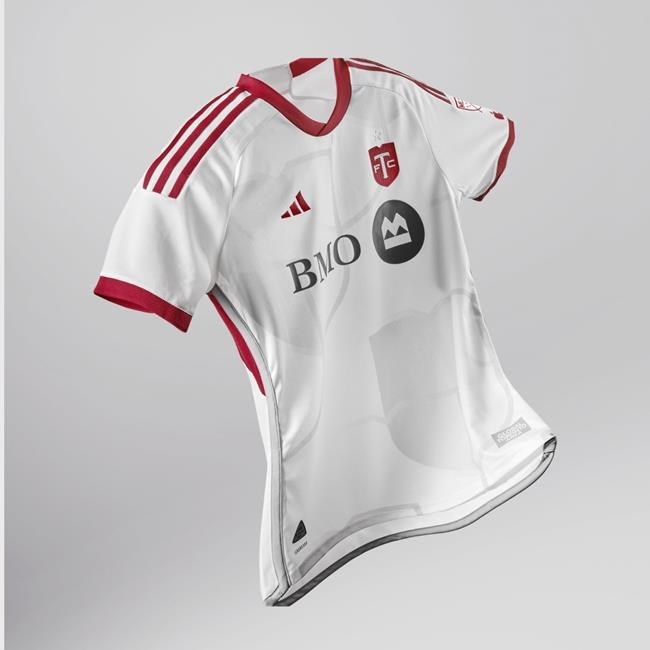TORONTO — Canada will welcome the world during the 2026 FIFA World Cup and Toronto FC is looking to show off the city's "diverse cultures, places and people" in the lead-up to the soccer showcase.
The MLS club plans to use its new kit to help pave the way.
While the bottom line behind new jerseys is all about keeping supporters buying, these days team uniforms can come with a story or fit into a larger plan. For TFC, its new "community" or away kit will be part of a campaign leading up to the World Cup.
The marketing blueprint is a play on GTA (Greater Toronto Area). TFC's GTA stands for Global Toronto Area, celebrating the city ahead of the World Cup.
Chris Shewfelt, vice-president of business operations for Toronto FC and the Toronto Argonauts, says the uniform pays homage to the team's new Global Toronto Area campaign celebrating "the different culture, the diversity, the different communities that make up the city of Toronto, the beautiful diverse people that make up the city of Toronto."
"This campaign you're going to see it spread across the next three seasons," he added.
Fans got a sneak peek last month at a version of the new uniform and those of other clubs in an apparent inadvertent leak via an update to the EA Sports FC 24 video game.
The new duds replace the old community kit, introduced in early 2022. MLS teams and Adidas, which provides the league's kit, work on two-year cycles.
Dubbed a "white and silver split design," that jersey was said to be "uniting club and culture, city and community." For some, the storyline was more akin to finding something at the bottom of the laundry hamper.
The new jersey is a cleaner version. White with understated red trim, it has a vintage feel. The player's name and number are shown in red on the back.
For the first time, the jersey uses the club's secondary shield logo on the chest. The shield logo, which has a large T flanked by a smaller F and C, has been used on other apparel before but not the jersey.
"By no means is this a rebrand," said Shewfelt. "That is not replacing the primary … We're proud of that logo."
A single star adorns the kit above the shield symbolic of the franchise's 2017 MLS Cup triumph.
The kit has an interlocking shield pattern "symbolizing how the TFC community intersects and comes together."
The franchise plays to build on the shield iconography, using its shape to outline flags from the players’ and fans’ home countries in future digital and other creative assets.
White shorts also sport the club shield and the player's number.
The franchise says the GTA campaign will span three seasons and "highlight the global city that is Toronto and its passion for soccer, the global game."
Global Toronto Area appears on the jersey jocktag (a piece of material at the bottom of the shirt). The club’s mantra "All For One" is on the neck of the jersey.
While primarily the away kit, the new uniform may be used at home a handful of times.
Toronto introduced a new home kit last season, designed with the assistance of Mark Hinkley, a Day 1 TFC season ticket-holder. Hinkley was an inspired choice given he is a graphic designer by trade and an avid jersey collector with more than 150 in his collection.
The front of his jersey has grey and black hoops, framed by red, with the shoulders and sleeves red with dark trim. That 2023 attire is called the "club kit" and will be used primarily for home games.
Proving beauty is in the eye of the beholder, supporters seemed to love or hate the red-and-black uniform — with many wishing it was used as the away kit.
Shewfelt described this year's design process as "Adidas-led … with club input."
The club also had a third uniform last season. The so-called Energy Kit, a tropical-flavoured blue-and-pink design, was a one-off and will not be used on the field this year, although it may be featured in the club's partnership with the Toronto Caribbean Carnival.
MLS teams plan in advance when it comes to their kit. TFC is already close to closing the book on the 2025 design.
---
Follow @NeilMDavidson on X platform, formerly known as Twitter
This report by The Canadian Press was first published Feb. 15, 2024
Neil Davidson, The Canadian Press




